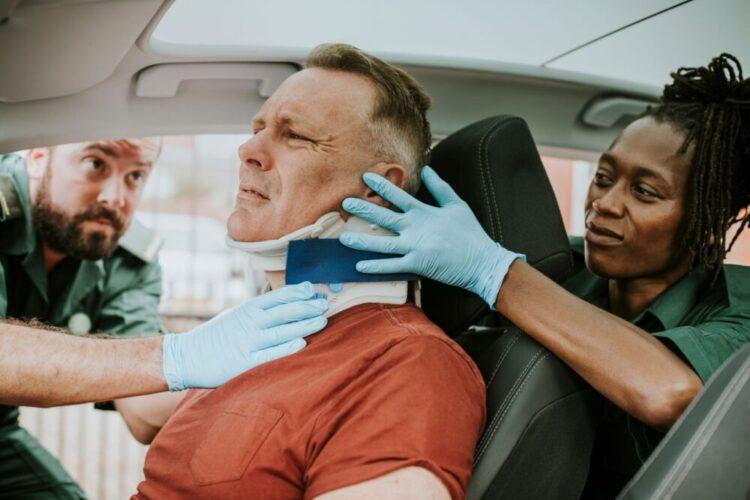Business
How To Document Your Injuries For A Car Accident Claim

Being involved in a car accident is always a stressful and upsetting experience. The last thing you want to deal with is complex insurance claims and legal battles. However, if you’ve been injured in a crash, it’s crucial to properly document everything to support your injury claim.
Insurance companies will scrutinize every detail, so having thorough documentation of your injuries is key to getting the compensation you deserve. It may seem like a hassle at first, but taking the right steps from the beginning can make a world of difference.
This guide will walk you through exactly how to document your car accident injuries for the strongest possible injury claim. By following these steps, you’ll create a comprehensive paper trail proving the full extent of the harm you suffered because of the accident. (Interesting Topics – Challenges of Motorcycle Accident Cases in Orange County)
Table of Contents
Seek Immediate Medical Attention
Seeking prompt medical attention is imperative after an accident, regardless of how minor the injuries may initially seem. Adrenaline can temporarily mask pain, and some severe internal injuries, such as whiplash or head trauma, may not be immediately apparent. It is crucial to get examined by a medical professional as soon as possible after the accident to identify and address any underlying issues before they worsen.
If you are involved in an accident, say a motor vehicle accident in Oklahoma City, immediately go to the emergency room, your primary doctor, or an urgent care clinic. Explain clearly that you were just in a car accident. The medical staff will be able to properly evaluate, diagnose, and document all injuries—both visible wounds as well as underlying issues.
Getting this professional evaluation creates the first critical documentation of your injuries being directly caused by the car accident. Follow the medical provider’s full recommendations for treatment, testing, therapy, rest, etc.
Take Detailed Photos Of Visible Injuries
While you’re still at the hospital or clinic, take photographs of any visible injuries like:
- Cuts, scrapes, bruises
- Swelling, bandages, casts, splints
- Burns, lacerations, damaged limbs
- Seatbelt marks, airbag burns
Be sure to capture the injuries from multiple angles, both close-up and wider shots, showing the location of the body. These early photos help lock in evidence that the injuries occurred due to the specific car accident.
It’s also a good idea to take ‘before and after’ photos tracking the progression of healing. As bruises fade and cuts heal, keep taking pictures periodically over the next few weeks. This visual timeline can strongly demonstrate the longevity of your injuries.
For less visible injuries like whiplash, concussions, or internal bleeding, follow your doctor’s recommendations and document with imaging tests like X-rays and MRI/CT scans. Request copies of all imaging results and reports.
Keep A Detailed Injury Journal
From the day of the accident onward, keep a written log documenting everything related to your injuries and recovery:
- Pain levels and locations each day
- Difficulty sleeping, headaches, confusion
- Missed work and lost income
- Effects on daily activities like bathing, chores, exercise
- Emotional toll—anxiety, depression, trauma
- Medications taken, dosages, side effects
- Appointments, therapy sessions, follow-ups
Be as specific as possible—note the date, time, duration, and details for entries. This injury journal paints a comprehensive picture of how the accident impacted your life over time.
While memories can fade, this written log objectively captures the pain, limitations, costs, and disruptions caused by your injuries. It will help show the full extent of how the accident altered your life. (Also Check – Litigation vs. Settlement In A Car Accident In Baton Rouge)
Save All Medical Documents, Bills, And Receipts
Obtain copies of all your medical records, including:
- Initial examination notes and diagnosis
- Imaging reports like X-rays, MRIs, etc.
- Procedure and surgery reports
- Prescriptions and medication lists
- Therapy/rehab instructions and notes
- Doctor’s notes from each follow-up visit
Request itemized bills and receipts for:
- Emergency room and hospitalization costs
- Doctor visits, treatments, procedures
- Medications, medical supplies, equipment
- Travel costs to and from appointments
- In-home nursing or aide services
- Future treatment cost estimates
Keep everything organized in a folder or binder. Having this documentation helps calculate the full financial cost of your injuries and care. It provides evidence of the treatment directly stemming from the car accident.
Obtain Witness Statements
If there were any witnesses in the vicinity who saw your injuries immediately following the crash, get written statements from them. Their third-party accounts can help corroborate that the visible wounds were fresh and clearly resulted from the accident.
Ask witnesses to write a brief statement describing what injuries they observed, like bleeding, limping, scrapes, confusion, etc. Have them sign and date the accounts. Witness statements from bystanders, first responders, or passengers can help bolster your claim.
Argue For Damages If Injuries Linger
If you suffer significant injuries that have lasting impacts like permanent scarring, disfigurement, disability, or impairment, these can potentially allow you to claim additional damages beyond just medical costs.
Continuing to take photos and document any limitations in day-to-day functioning helps demonstrate the long-term toll on your life. Make sure to detail this in your injury journal as well.
Consulting with a personal injury lawyer is advisable if you expect longstanding effects from the accident. They can help evaluate your damages claim and what level of compensation would be appropriate.
Stay Organized And Persistent
Documenting your injuries thoroughly takes time and diligence, but it’s absolutely critical for a successful car accident injury claim. Keep meticulous records organized by date and type. Stay persistent in gathering documentation throughout your entire recovery.
Insurance companies scrutinize every detail to minimize what they pay out. Having strong documentation showing precisely how the accident caused your injuries safeguards your rights. It prevents disputes and bolsters your case for full and fair compensation.
In Conclusion
No one wants to deal with injuries after a serious car accident. However, taking the proper steps to document your injuries comprehensively can make an incredible difference in the outcome of your insurance claim and any legal battles. By following the advice in this guide, you create a strong trail of evidence linking the accident to your injuries. This gives you the best chance of receiving appropriate compensation to cover costs and damages.
Stay vigilant about methodically documenting the accident’s impact on your health and livelihood. The more documentation you compile demonstrating exactly how the crash harmed you, the stronger your injury claim will be. This can be your most powerful tool. (Shocking & Interesting Information: Determining Liability In Truck Accidents In Chicago)

-

 Business3 years ago
Business3 years agoHow to Do Long-Distance Moves with Children
-

 Business2 years ago
Business2 years agoThe Ultimate Guide To Thriving In Your Printing Franchise
-

 Business2 years ago
Business2 years agoExploring The Benefits And Challenges Of Restaurant Franchising
-

 Business4 years ago
Business4 years agoIs Guest Posting a Good Inbound Marketing Strategy?
-

 Travel2 years ago
Travel2 years agoQuick Guide: Moving To Santa Rosa?
-

 Tech3 years ago
Tech3 years agoCyber Table That Will Change Your Life
-

 Lifestyle2 years ago
Lifestyle2 years agoDallas’ Hidden Gems: 6 Must-Try Restaurants Off The Beaten Path!
-

 Lifestyle2 years ago
Lifestyle2 years agoTop 10 Restaurant Franchises In The US











Recent Comments